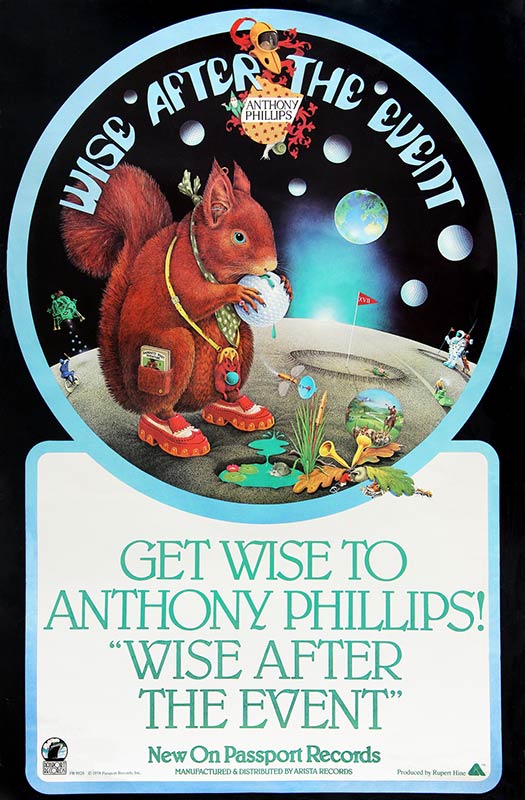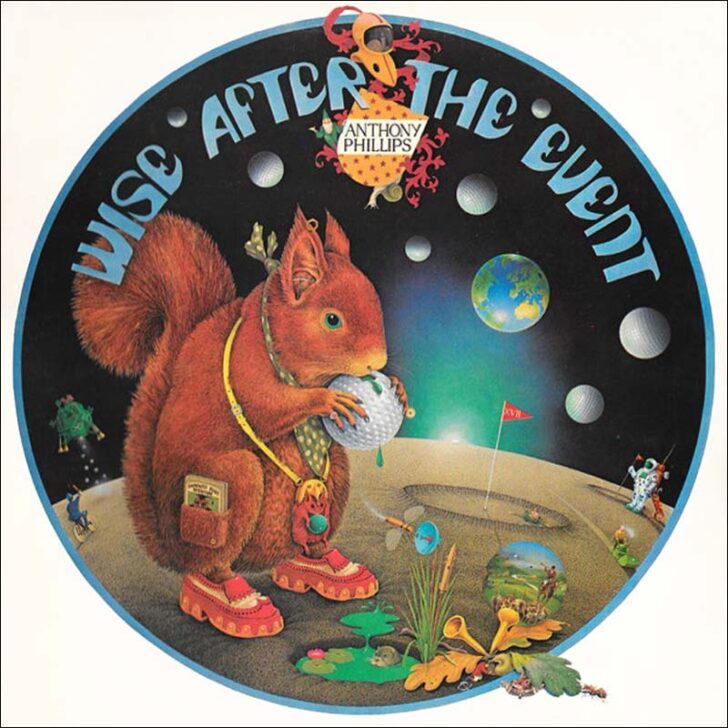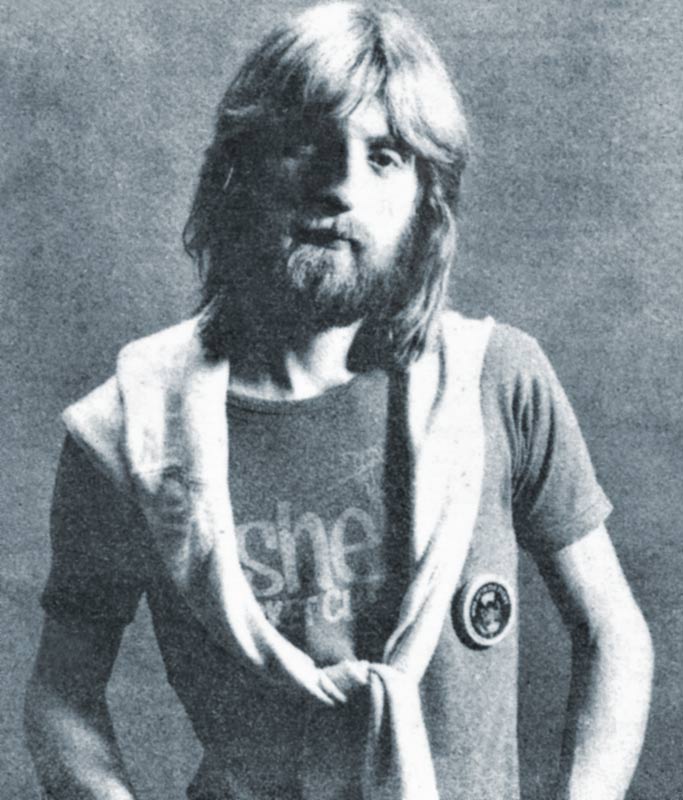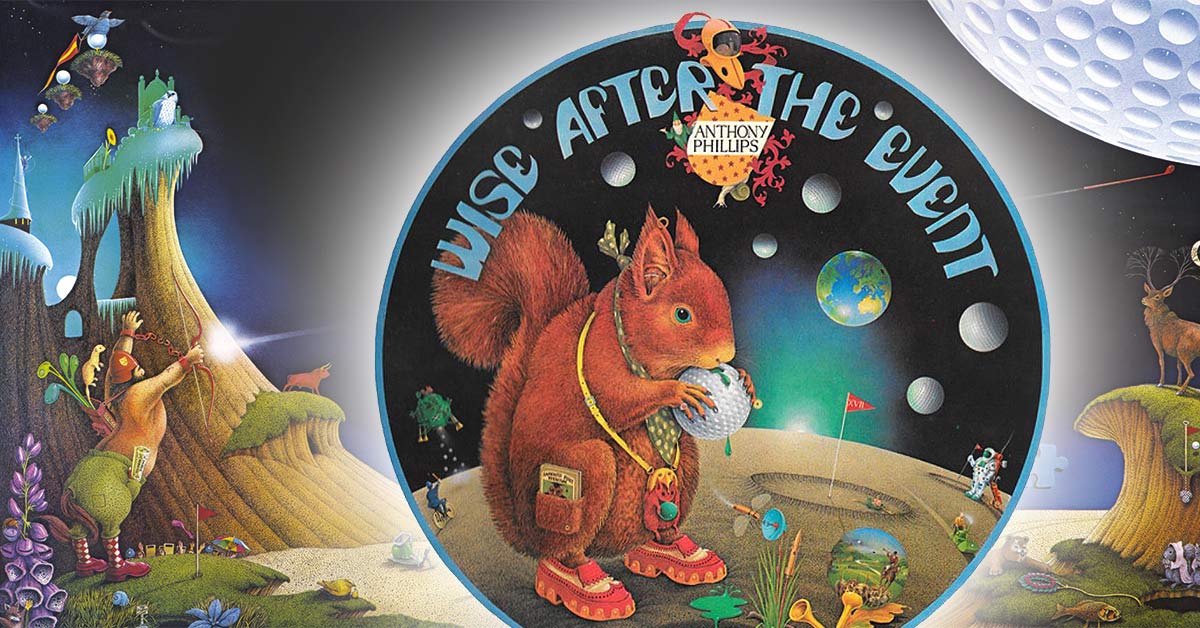- Article
- Read in 6 minutes
Anthony Phillips – Wise After The Event – review
Just one year after The Geese And The Ghost, Anthony Phillips’ second solo album Wise After The Event was released in 1978.
The album Wise After The Event was released in March 1978 (UK) and June 1978 (USA). It is the second ‘solo’ album after The Geese And The Ghost by the former Genesis guitarist. He himself sees it more as the first real solo album, as the predecessor was a co-production with Mike Rutherford, which was released under Phillip’s name.
The songs (with author) and running time of the original LP/the 2016 re-issue:
LP Side 1
We’re All As We Lie (Anthony Phillips) 4:34/4:37
An acoustic guitar figure starts and Anthony Phillips sings softly over it, almost whispering. Synthesiser and electric guitar are added to the chorus, but it remains rather quiet, also because the drums are noticeably restrained. A shortened version was released as a single.
Birdsong (Anthony Phillips) 7:30/6:47
The Birdsong begins like a quiet folk song. Bass and drums are added from the chorus onwards. The second voices seem a little unclean. After four minutes, we hear a guitar solo until a quiet outro with repetitions fades in and out at the end.
Moonshooter (Anthony Phillips) 5:52/5:58
The verse is in 4/4 and the chorus in 6/8, so the transition causes difficulties when snapping along. At least the chorus is catchy and might have worked better as a single than We’re All As We Lie. Otherwise, we have the same recipe again: acoustic guitars, simple bass, soft drums and somewhat brittle vocals.

Wise After The Event (Anthony Phillips) 8:45/10:32
After a half-minute quiet intro, the slightly distorted riff of a 12-string guitar breaks through, playing over a pounding 4/4 bass drum. At the time I was waiting for it to go more in the direction of ‘heavy’, but this is immediately followed by an interlude with gentle drums and guitar arpeggios, which rather takes the edge off. Although the bass and drums then kick in again more powerfully, the song could have had a bit more ‘oomph’. The middle section consists of plucked guitars, which sometimes speed up and sometimes slow down. The third verse is again played by the whole band. At the end, there is another calm outro, in the 2016 version including synthesiser, which picks up on the theme of Now What?
LP Seite 2
Pulling Faces (Anthony Phillips) 4:32/4:37
I had bought Genesis And Then There Were Three two months earlier in 1978 and Phillips used to be their guitarist. With Pulling Faces, the first song on the album began as I had expected from an ex-Genesis member – with powerful keyboards and a wall of sound. After 30 seconds came the first verse and the bombast was over, shortly afterwards it became even quieter and my expectation meant I was really disappointed here. It sounded like a broken promise and was only a skip candidate after that. It’s not really bad, but there should have been at least one consistently strong song on the album. He did better on Sides with Um & Aargh.
Regrets (Anthony Phillips) 5:15/6:05
Accompanied only by piano and orchestra, Phillips regrets having rejected the love of a woman. How he wishes he could close his eyes to the love he doesn’t feel. His somewhat untrained voice fits well here in its honesty, even if it sometimes seems very strained. What would it sound like with a really great singer?
Greenhouse (Anthony Phillips, Jeremy Gilbert) 3:00/3:04
The only track that Phillips did not write alone is also the shortest. A guitar figure opens the song, which works better in its brevity than Birdsong, for example. The almost pop-like arrangement lacks only a sing-along chorus, so it was probably not considered as a single at the time. But it shows that he can also make short and snappy arrangements.
Paperchase (Anthony Phillips) 5:28/5:34
The structure is similar to the other songs on the album: a calm verse, a little more life in the chorus and a calm outro at the end.
Now What (Anthony Phillips) 8:30/8:27
Inspired by a TV documentary, Phillips sings about the slaughter of seals, otters and other animals. Instead of aggression against the slaughterers, you can hear his hopelessness and bewilderment in the music and in his voice. He sings in falsetto in the chorus because otherwise it would be too high. The song begins quietly with guitar and manages almost without drums. In the choruses, powerful synthesisers replace an orchestra, making it very bombastic at times. Things calm down again at the end. Piano, guitars and synthesiser bubble towards the final groove.
Squirrel (4:31)
… was supposed to be released as an EP with the album, which was cancelled, so it was only released as a single and flopped. Anthony’s vocals are accompanied only by the piano. The mood is somewhat reminiscent of Regrets without the orchestra. In the middle there is a short solo with detuned piano before another verse closes the track. A short version of We’re All As We Lie (3:53) was also released and was just as unsuccessful.
Die Outtakes
As the album was planned with an additional EP (including Squirrel) at the time, there was still some material left over, which was supplemented with demos and instrumental versions and later released in 1990 and on the 2016 re-issue. The Cottage Tapes had already been recorded with John G. Perry and Michael Giles.
We’re All As We Lie (Link) 1:25 – ist eine kurze Passage, in der eine E-Gitarre den Refrain des Songs spielt, mit Ein- und Ausblendung.
Sleeping On An Interstellar Plane 3:08 – ist das Demo zu Greenhouse mit grauenhaftem mehrstimmigen Gesang (aber es ist ein Demo!!!)
Paperchase (Instrumental Demo) 5:34
Birdsong (Instrumental Demo) 5:36
Moon Shooter(Cottage Tapes Demo) 5:39
We’re All As We Lie (Cottage Tapes Demo) 3:56
Pulling Faces (Cottage Tapes Demo) 4:33
Squirrel (Instrumental Mix) 4:31
Wise After The Event (Instrumental Mix) 8:59
Magic Garden (Solo Piano Mix) 1:57 – erschien zuerst auf Private Parts & Pieces II: Back To The Pavillion
We’re All As We Lie (7” Single Version) 3:53
Regrets (Piano Mix) 6:04
Chinaman (Basic Guitar Mix) 0:48 – erschien zuerst auf Private Parts & Pieces II: Back To The Pavillion, wurde aber noch einmal bearbeitet
Now What (Are They Doing with My Little Friends)? (Instrumental Mix) 8:14 – ist die Demo-Version, auf der deutlich mehr Synthesizer zu hören sind
Musicians
Anthony Phillips – vocals and h armonica
Michael Giles – drums (King Crimson, 21st Century Schizoid Band, Murray Head)
John G. Perry – bass (Wal Custom) (Caravan, Aviator, Quantum Jump, Rupert Hine)
The Vicar (= Anthony Phillips)– guitars, keyboards and sundries
Jeremy Gilbert – keyboards on Greenhouse, Harp on Now What
Mel Collins – Soprano Sax on We’re All As We Lie, Flutes on Birdsong and Tremulous (King Crimson, Camel, Paul Carrack, Peter Gabriel, Eric Clapton u.v.m.)
Robin Phillips – oboe on Sitars & Nebulous (Bruder von Ant)
Rupert Hine – percussion, backing vocals, locks, probs, modes and vibes (Quantum Jump, Thinkman, SpinOneTwo, Produzent für Tina Turner, Saga, Chris DeBurgh u.v.m.)
Perkin Alanbeck (= Alan Perkins, Engineer) – Synthesizer on Birdsong
Humbert Ruse (= Rupert Hine) & Vic Stench – drums & bass on Greenhouse
Rodent Rabble – clicks, craps and crapons
Gilbert Biberian (Jeremy Gilbert?) – orchestra conductor on Regrets, orchestral arrangements by AP

The album was produced from October 1977 to January 1978, and although Anthony Phillips is officially listed as the producer, it was actually Rupert Hine.
The Cover
I bought the album back then mainly because of the cover, which was lovingly designed by Peter Cross. The many loving details have references to the individual songs and you can still discover little subtleties for a long time. It’s one of the best examples of how much was lost in the transition from LP to CD. We also associate music with what we see and this beautiful cover takes the music to a higher level. I associate many of my favourite albums with the cover, which gives the music its own frame.
Some of the information on the album is confusing. On the one hand, some of the musicians involved are mentioned with changed names, which is probably due to British humour. On the other hand, tracks are mentioned that do not appear on the album. However, this is due to the fact that the album was planned with an additional EP (including Squirrel), but the EP was then cancelled without replacement. The cover was not changed due to other projects by Peter Cross and probably for cost reasons.
Assessment

The biggest weakness is Anthony’s vocals, which audibly struggle in the treble and hardly develop any volume. But she is authentic and makes the songs personal. In Regrets or Now What? she conveys the pain in an understandable way. It’s romantic music and yet I regret that two or three of the songs aren’t more intense. It always sounds like the handbrake is on. The song structure is often similar and the outros that almost always appear stand out. If that sounds too negative, I would like to assure you that I appreciate the album and that a few songs (Regrets, Now What?) in particular have grown on me. And the cover!
All in all
I’m probably not alone in this criticism, because a lot changed on the follow-up album Sides: more confident vocals, from Ant, additional different singers, tighter songs, heavier distortion guitars, more variation. But that’s another review …
Author: Peter Musto

